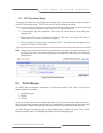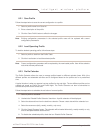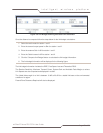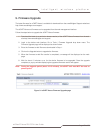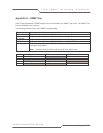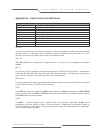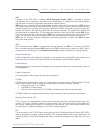
Page 75 of 78
i n t e l l i g e n t w i r e l e s s p l a t f o r m
airClient™ Nexus PRO TOTAL User Guide
Appendix B – Useful terms and definitions
Acronyms and Abbreviations
MAC Media Access Control
aCNPT aCNPT Nexus PRO TOTAL
RSSI Receive Signal Sensitivity Indication
SSID Service Set Identifier
DHCP Dynamic Host Configuration Protocol
ACL Access Control List
SNMP Simple Network Management Protocol
NTP Network Time Protocol
STP Spanning Tree Protocol
TCP Transmission Control Protocol
IP Internet Protocol
802.11h
The 802.11h specification is an addition to the 802.11 family of standards for wireless local area networks
(WLANs). 802.11h is intended to resolve interference issues introduced by the use of 802.11a in some
locations, particularly with military radar systems and medical devices.
802.11Q
IEEE 802.11Q defines a mechanism for tagging frames so that they can be segregated into separate
VLANs.
802.11i
An upcoming security standard currently being developed by IEEE that features 802.1x authentication
protections and adds AES (Advanced Encryption Standard) technology, a stronger level of security than
used in WPA for encryption protection along with other enhancements.
IEEE 802.1x
A security standard featuring a port-based authentication framework and dynamic distribution of session
keys for WEP encryption. A RADIUS server is required.
SSID
Each ESS has a Service Set Identifier (SSID) used to identify the Radio that belong to the ESS. Radios
can be configured with the SSID of the ESS to which they should associate. By default, radios broadcast
their SSID to advertise their presence.
VLAN
A VLAN is a switched network that is logically rather than physically segmented. VLANs enable
workstations and other devices to have a virtual association - independent of geographic location or
physical attachment to the network. These groupings can be based upon organizational unit, application,
role, or any other logical grouping.




